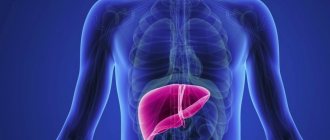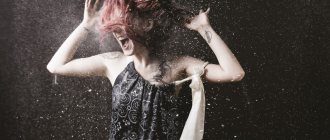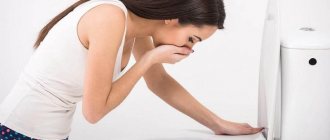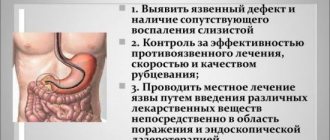December 5, 2017
December 5, 2017
- Computed tomography of the stomach
- Gastroscopy
- Indications and contraindications for CT scan of the stomach
- Indications and contraindications for gastroscopy
- Which is better: CT scan of the stomach or gastroscopy?
The general health and condition of a person largely depends on the gastrointestinal tract.
Therefore, if discomfort and pain occur in the stomach, pancreas, esophagus or intestines, you should immediately examine this area.
Otherwise, the presence of pathology may be detected too late, and it will not be subject to treatment.
It is almost impossible to identify the cause of discomfort and pain during a visual examination, and for this reason, gastroscopy and computed tomography of the stomach are used to diagnose the condition of the stomach.
Computed tomography of the stomach
CT scan of the stomach is a modern, reliable and informational method for diagnosing the condition of the stomach using X-rays.
Diagnostics are carried out using open and closed tomographs, depending on the patient’s wishes. They consist of a ring, which is equipped with sensors, and a movable table. The patient lies down on this table, its position is fixed, after which the table moves inside the ring and stops in the ring relative to the location of the stomach.
The subject should remain completely still. At this moment, the sensors rotate, and X-rays scan the internal organs layer by layer.
The program converts images into three-dimensional images, which allows you to examine the stomach from all sides and at the desired scale. This will greatly facilitate the doctor’s work, and it will be almost impossible to make an unreliable diagnosis.
A CT scan of the stomach is sometimes included in a comprehensive scan of the abdominal organs and then its cost in Moscow will be 4000-6000 rubles. A separate study of the state of the gastrointestinal tract will cost about 2000-4000 rubles.
The entire examination process will take about 20 minutes without intravenous administration of a contrast agent; otherwise, the diagnostic duration will be about 50 minutes.
Purpose of gastroscopy
An endoscopic technique is prescribed for suspected diseases of the digestive tract: esophagus, stomach and duodenum. Endoscopy, unlike other diagnostic methods, allows one to identify many pathologies at the initial stages of development. In addition, a number of diseases can not only be detected, but also cured thanks to the direct delivery of drugs, the use of laser technologies and the possibility of introducing microsurgical instruments. It is also worth doing a gastroscopy for prevention in the presence of a hereditary predisposition to diseases of the esophagus, stomach or intestines.
The procedure may pursue the following goals:
- search for abnormalities in the upper gastrointestinal tract (narrowing and inflammation of the esophagus, detection of cancer and ulcerative lesions);
- establishing the causes of poor health (nausea, vomiting, weight loss, etc.);
- assessment of the condition of the mucosa after surgery;
- control of therapeutic treatment of a number of diseases;
- performing a biopsy (tissue collection for histological analysis);
- removal of small tumors;
- stopping bleeding by laser cauterization;
- removal of foreign objects, etc.
The Miracle Doctor clinic in Moscow invites patients to undergo a gastroscopy procedure using modern equipment. Current prices for examinations are presented on the website.
Gastroscopy
Gastroscopy is a diagnostic method for examining the stomach using an endoscope, which is a soft and flexible tube at the end of which there is a camera and a flashlight with cold light.
Using an endoscope, the doctor displays the condition of the stomach, esophagus, duodenum and mucous membrane. The device is introduced into the human body through the oral cavity; first, the patient lies on his left side and slightly bends his knees.
To avoid discomfort, the throat is numbed with anesthesia, but this will not prevent the gag reflex.
The entire research process takes about 5-10 minutes. The price for gastroscopy in Moscow is about 3,000 rubles.
How to prepare for an MRI examination?
This procedure does not require special preparation. Your doctor will recommend that you stop eating and drinking immediately before the test. To obtain the most accurate result, it is recommended to limit yourself in the consumption of tea, coffee and flour products a few days before the procedure. The tomograph creates a special magnetized field, as a result of which before the procedure it is necessary to remove jewelry and metal objects, glasses, piercings, watches, belts, remove your mobile phone, flash cards, coins, bank and transport cards from your pockets. Females are advised to limit themselves to minimal makeup, as some products contain metal particles.
Indications and contraindications for CT scan of the stomach
CT scan of the stomach and gastroscopy are performed for the following indications:
- Pain in the gastrointestinal tract;
- Nausea and vomiting;
- Sour or bitter taste;
- Heaviness in the stomach;
- Neoplasms;
- Inflammatory process;
- Identifying causes of bleeding.
The following factors are contraindications for computed tomography:
- Pregnancy, since the radiation dose negatively affects the development of the fetus;
- Obesity. If you weigh more than 160 kg, diagnostics will not be carried out for technical reasons;
- Young age. The study is not recommended for children under 12 years of age, but for serious indications the study can be performed;
- Claustrophobia. Patients with this disease should be diagnosed only with open-type tomographs;
- Lactation. The contrast can enter the child’s body and cause poisoning;
- An allergic reaction to iodine, since the contrast agent contains iodine-containing substances;
- Kidney pathologies. With this pathology, fluid is removed from the body slowly, including contrast, which will cause poisoning.
Indications for the procedure
There are a number of indications for magnetic resonance imaging of the stomach that are directly related to diseases and symptoms.
Stomach ulcer
This disease can be prevented if a procedure such as an MRI of the stomach is performed in a timely manner and the right diet is chosen already at the stage of gastritis.
Chronic or acute gastritis
One of the most common stomach diseases - gastritis - after some time can become chronic and develop into an ulcer. This can be avoided if you undergo a timely examination of the stomach and esophagus using magnetic resonance imaging.
Stomach cancer
MRI of the stomach allows you to get clear and clear images, thanks to which you can identify tumors with 100% accuracy.
Esophageal spasm
This rather painful process can occur not only due to a malfunction of the gastrointestinal tract, but also due to the presence of concomitant diseases. An MRI of the esophagus shows what is causing the unpleasant symptoms. Doctors recommend undergoing a tomography examination to be sure of the accuracy of the diagnosis.
Diaphragmatic hernias and more
It is not always possible that a routine examination and questioning by a general practitioner allows one to make the most accurate diagnosis, so one has to resort to various diagnostic methods that can show a clear picture. The same is the case with diaphragmatic hernias. Experts recommend examining the stomach and esophagus using MRI.
Diagnostics. Main types
Ultrasound as the most accessible examination method
High-precision ultrasound examination is so harmless that it is indicated even for pregnant women, nursing mothers and children. What is good about ultrasound, or the main advantages of this examination method:
- speed and simplicity of the procedure;
- affordability;
- excellent visualization of the contours, walls of the stomach, its various parts, esophagus, pancreas, liver, large and small intestines (peristalsis);
- information content (not only organs, but also vessels are visualized);
- issuance of a report immediately after the procedure.
Ultrasound results allow us to see possible gastrointestinal pathologies at an early stage:
- inflammatory processes in the stomach and areas adjacent to the organ;
- presence of neoplasms;
- ulcer;
- carcinoma;
- lymphoma;
- others.
The main indications for ultrasound examination are:
- pain in the stomach;
- dyspepsia;
- vomit;
- nausea;
- bowel dysfunction;
- suspicion of cancer;
- gastritis;
- pancreatitis;
- duodenitis;
- others.
The ultrasound method, which examines the stomach, is a fairly effective diagnostic method, but gastroscopy and CT can be prescribed to clarify the diagnosis.
Gastroscopy
A diagnostic method such as gastroscopy is a visual examination of the condition of the gastrointestinal tract: esophagus, stomach, duodenum using an endoscope. An endoscope is a tube with a mini video camera at the end.
Gastroscopy allows the doctor to see the following pathologies:
- inflammation of the organ mucosa;
- erosion;
- various types of deformations;
- bleeding in the esophagus;
- organ neoplasms.
The main indications for examination using gastroscopy are:
- pain in the gastrointestinal tract;
- gastritis;
- ulcer;
- suspicion of cancer.
I must say that the gastroscopy procedure is not very pleasant, but it has many advantages. Let's list them:
- the result of the study is given to the patient immediately after the procedure;
- affordability of the procedure;
- taking tissue samples for analysis (biopsy);
- examination for the presence of various types of bacteria (Helicobacter);
- carrying out therapeutic manipulations (excision of polyps, cauterization of erosions, washing erosions and ulcers with medications, and so on).
Most importantly, having the results of gastroscopy in hand with a ready-made diagnosis, you can immediately go to your doctor and receive the best treatment.
But there are cases (and there are many of them) when you cannot do without a computed tomography scan of the stomach.
CT scan
Today, CT (computed tomography) is considered throughout the world to be one of the most accurate and informative diagnostic methods, the result of which is a three-dimensional image of the organs under study (in our case, the gastrointestinal tract).
Indications for examining the abdominal cavity using computed tomographs:
- preparation for operations;
- detection of any diseases of the abdominal organs;
- unexplained weight loss;
- constant aching, sharp or dull pain in the abdomen;
- yellowness of the skin, mucous membranes, whites of the eyes;
- abdominal injuries;
- identification of damaged abdominal organs;
- detection of neoplasms, both benign and malignant;
- identification of inflammatory processes;
- assessment of how effective postoperative recovery is, or the prescribed treatment of diseases.
What does an abdominal CT scan reveal:
- sizes and boundaries of the gastrointestinal tract organs;
- structure of tissues of the gastrointestinal tract;
- injured organs;
- inflammatory processes of the gastrointestinal tract;
- neoplasms (benign and malignant);
- presence of stones;
- cysts;
- affected lymph nodes;
- changes in the vascular system;
- atherosclerosis;
- hemorrhages;
- organ abnormalities.
The most accurate and detailed diagnosis is obtained with contrast-enhanced CT (intravenous administration of iodine-containing contrast agent).
What is atrophy of the mucous membrane in the stomach and why is it dangerous?
Atrophy of the gastric mucosa is an irreversible process in which the death of its cells that produce gastric juice and hydrochloric acid occurs. This condition also includes the gradual replacement of stomach cells with connective tissue and cells similar in structure to the cells of the intestinal mucosa. It has now been scientifically proven and substantiated that severe atrophy of the gastric mucosa, which can only be proven using histology, increases the risk of stomach cancer. You can read more about atrophy and atrophic gastritis in our blog article “What you need to know about atrophic gastritis?” .
Symptoms of the most common gastrointestinal diseases
You should definitely get diagnosed if you have the following typical symptoms of problems in the gastrointestinal tract:
- heartburn;
- bloating (flatulence);
- uncontrollable belching;
- constant nausea;
- vomiting reflex;
- problematic stool;
- bad odor from the mouth and bitterness in the mouth;
- coating on the tongue of various kinds;
- allergies;
- skin itching and other allergic reactions;
- pain in the left hypochondrium or in the upper abdomen;
- fast fatiguability;
- lack of appetite;
- weight loss;
- some others.
To get rid of such “unpleasant” and dangerous symptoms, it is necessary to be examined in order to make an accurate diagnosis and begin urgent effective treatment.










